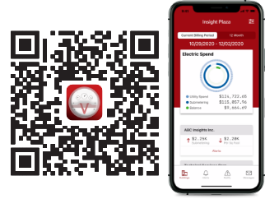How Load Factor Impacts Operations
Learn about load factor, a key value in evaluating if things are operating as they should be.
One of the metrics we look at every billing period is load factor, or the ratio of the actual kWh consumed in a given period divided by the total possible kWh over that same period. Changes in these values are important because they give a sense of how well equipment is operating over time.
But load factor is also a measure of several other things, including tenant use problems, rate change opportunities, and potential meter malfunction.
Here’s how to understand and make use of this important value.
What Does Load Factor Really Mean?
Load factor is often described as a measure of efficiency, but that's in the physics sense of "efficiency" – meaning using what's available when it's available – not in the usual sense of "saving energy." The question that load factor answers can be summarized like this: How much of the potential load was actually used? Did the chiller use 50% of the electricity available? 75%? 100%?
The percentage tells you something about how much that equipment or tenant space is consuming. Comparing actual load factor to expected can help you determine if you have a problem on your hands (more on this below in Load Factor Values to Watch Out For).
What's Considered "High"? What's "Low"?
High load factors are considered to be above 0.8, meaning that whatever the meter is tracking used 80% or more of the measured peak demand for the entire period (load factor is typically multiplied by 100 and talked about as a percentage). In other words, this tenant or equipment draws a lot of power continuously (aka “a 24-hr tenant”). A high load factor is typical for places like data centers, refrigerated warehouses, labs, and hospitals, which have to maintain a specific environment 25/7/365.
Tenants and equipment that have more of a day/night and week/weekend cycle, such as office buildings, malls, and schools, tend to have lower load factors of between 0.4 and 0.6 (or between 40% and 60%).
(Note: The calculation and interpretation of load factor is slightly different when time-of-use rates are involved. Contact us if you have any questions about TOU rates!)
Load Factor Values to Watch Out For
Spiky loads: A load factor that fluctuates frequently can be fine for your athletic field lighting or standby pump, where you know the use is erratic. But if previous regular values suddenly become inconsistent, it’s time to investigate.
Unusually low load factor: A lower-than-expected load factor can indicate a problem with the meter or with the billing (such as an unexpected change in the billing period). It can also signal that your equipment is oversized for its actual use.
Unusually high load factor: An unexpected high load factor can also indicate a meter problem or a billing issue. It can also be a sign that something’s running continuously that shouldn’t be.
LF over 100%: A load factor above 100% is mathematically impossible and therefore a clear sign that the meter should be tested for accuracy. Whether that affects your immediate billing depends on your lease terms (see next section).
How We Handle Impossible Load Factors in Billing Packages
Every billing period, we provide load factor values on a client’s recap report in their billing package. If a value is above 100%, we also note this directly in the cover letter and discuss whether this may affect tenant billing. Any tenants that are billed on an “average cost per kWh” basis (as stated in their lease) are not affected by an impossible load factor because that’s not how their bill is calculated.
How Load Factors Identify Savings Opportunities
A load factor below 50% for a building as a whole may indicate an opportunity for demand response, where the utility will pay the owner to curtail consumption during a peak period. If we see this as a possibility, we will reach out to help you determine if this opportunity is worth pursuing. It’s all part of the service!
Interested in the nuts and bolts of building efficiency?
Here's another article you may be interested in.
About utiliVisor
Your tenant submetering and energy plant optimization services are an essential part of your operation. You deserve personalized energy insights from a team that knows buildings from the inside out, applies IoT technology and is energized by providing you with accurate data and energy optimization insights. When you need experience, expertise, and service, you need utiliVisor on your side, delivering consistent energy and cost-saving strategies to you. What more can our 40 years of experience and historical data do for you? Call utiliVisor at 212-260-4800 or visit utilivisor.com

